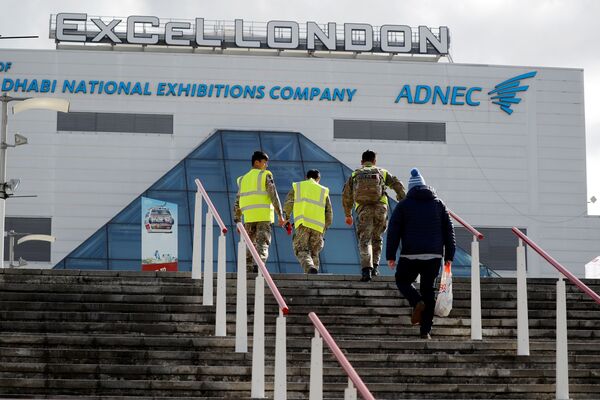In a bid to help fight the COVID-19 pandemic, the UK Ministry of Defence has set up a new 300-strong Joint Helicopter Aviation Task Force to airlift critical patients from remote areas to major hospitals that have intensive care facilities, writes the Daily Mail.
The helicopters will be flown and maintained in different regions across the UK, and may fly medicine and equipment to specific areas, as well as transporting patients or specialist doctors.
A Royal Navy Commando Helicopter Force Merlin and a British Army Wildcat AH1. pic.twitter.com/kWWuT9qLZt
— UK Defence Journal (@UKDefJournal) March 29, 2018
Incorporating a total of 13 helicopters, the Task Force includes:
1. Three Royal Navy Merlin helicopters on standby at RNAS Culdrose to support Southern England, the Channel Islands and the Isles of Scilly.
2. Three RAF Puma helicopters at Kinloss Barracks in Moray, Scotland to support the NHS in Scotland and Northern England.
3. Three RAF Chinook helicopters at RAF Odiham in Hampshire.
4. Two Army Air Corps Wildcats on standby at RNAS Yeovilton in Somerset.
5. Two Army Air Corps Wildcat helicopters detached to RAF Leeming, North Yorkshire, to cover Northern England.
The Joint Helicopter Aviation Task Force personnel could potentially work with hundreds of NHS and air ambulance paramedics over the next months, reports the outlet.
In addition to the helicopters, an A400M Atlas aircraft based at RAF Brize Norton could also be used for transporting patients and medical equipment.
RAF Chinooks, Pumas and Joint Helicopter Support Squadron(@Joint_Heli) personnel from @RAFBenson are in Lincolnshire supporting the @EnvAgency in flood relief efforts. pic.twitter.com/gkRgQxCTDe
— Royal Air Force (@RoyalAirForce) June 14, 2019
During the week, a joint drill at Thruxton Aerodrome in Hampshire involved some 30 military personnel and civilian medics, as they simulated loading COVID-19 patients on board the aircraft and hooking them up to ventilators.
With the current measures marking the first large-scale collaboration between military helicopters and health service staff, Commander Chris Knowles, Commanding Officer, 820 Navy Air Squadron, elaborated:
“One of the reasons we're standing by is the particular pressures that could come on the NHS if you ended up with a hot spot. I think we might be initially moving people out of areas that are difficult to get to – especially the Scilly Isles, places like that, to primary care.”
Underscoring the experience already displayed by some squadron members during combat missions in Iraq and Afghanistan, the Commanding Officer said:
“Everything we do is based on the advice of medical experts at the time. Whether the priority is smoothness for the patient, whether the priority is speed, or whether the priority is maintaining a low altitude.”
Knowles added that for respiratory diseases like the coronavirus helicopters were required to stick to a relatively low altitude.
“As a whole squadron we thought it was a great opportunity to be able to do our part, help our colleagues in the NHS. This is a whole-nation effort and it's a real team work piece for us,” said the officer.
Dr. Simon Hughes, an anaesthetist from HEMS (helicopter emergency medical services) was quoted as saying: “It's absolutely fantastic. This is a marriage, if you like, between the highly capable RAF and Royal Navy, and the professionalism and capabilities of Southampton Air Ambulance.”
The medic added that a Chinook helicopter could accommodate up to two ventilated patients, with the size of the aircraft allowing RAF staff to maintain “a safe distance from us and the patient”.
General Tyrone Urch, Commander Standing Joint Command (UK) was quoted as touting the joint effort as an example of the military's role in aiding the NHS and emergency services during the pandemic.

“The pilots and crews from across the Aviation Task Force have years of experience of challenging casualty evacuations from operations in the UK and abroad. The training in Thruxton brings these skills to the service of the NHS and continues to build the partnership with our frontline clinical staff that is vital to our battle against the coronavirus.”
Earlier in March, the UK Ministry of Defence announced it was creating a 20,000-strong COVID-19 support force amid the spreading coronavirus pandemic, with Defence Secretary Ben Wallace revealing that the civil contingency unit (CCU) would be boosted by an additional 10,000 troops.
The measures came as the country’s police force and NHS were working at full capacity to deal with the fallout from the pandemic.




